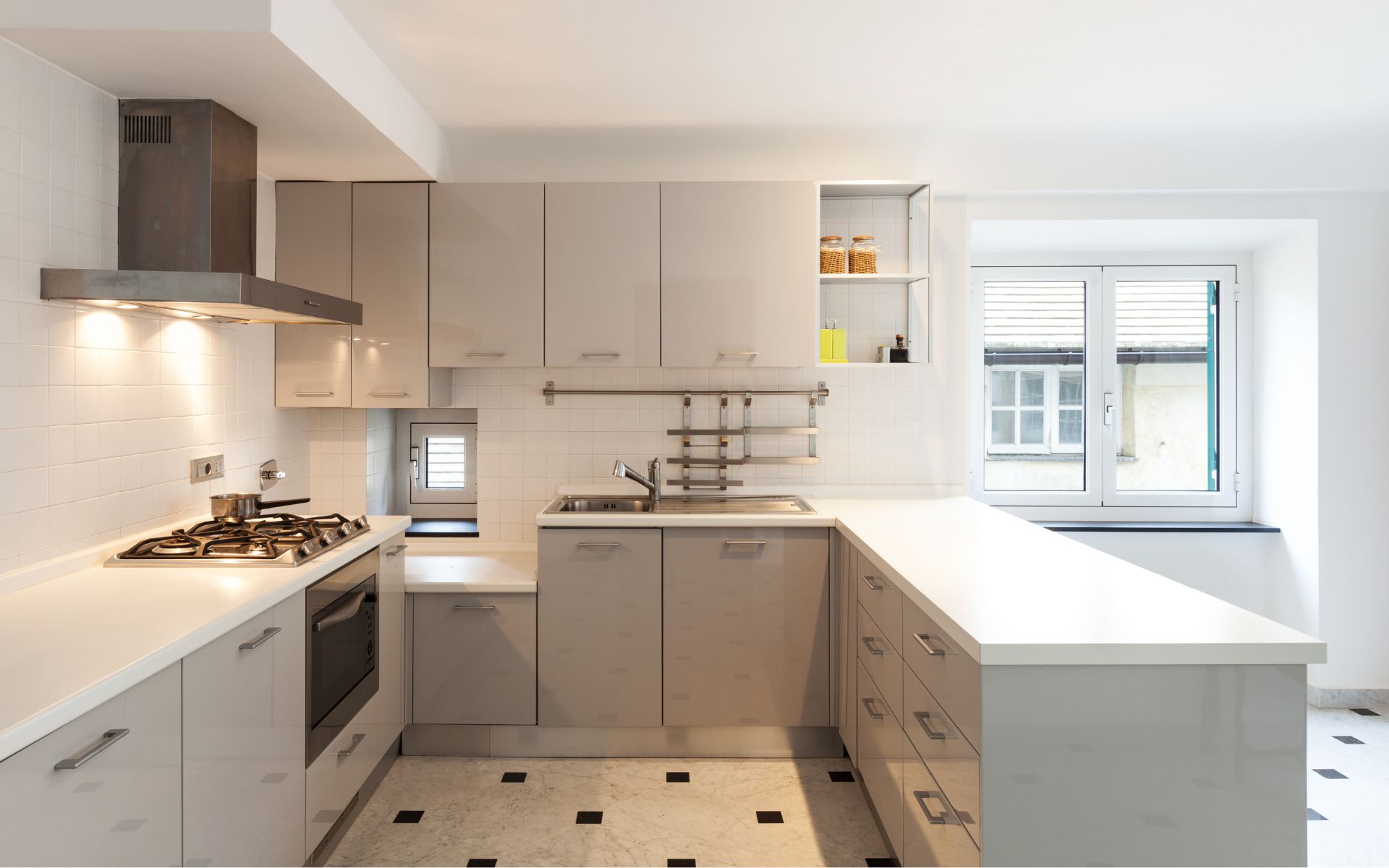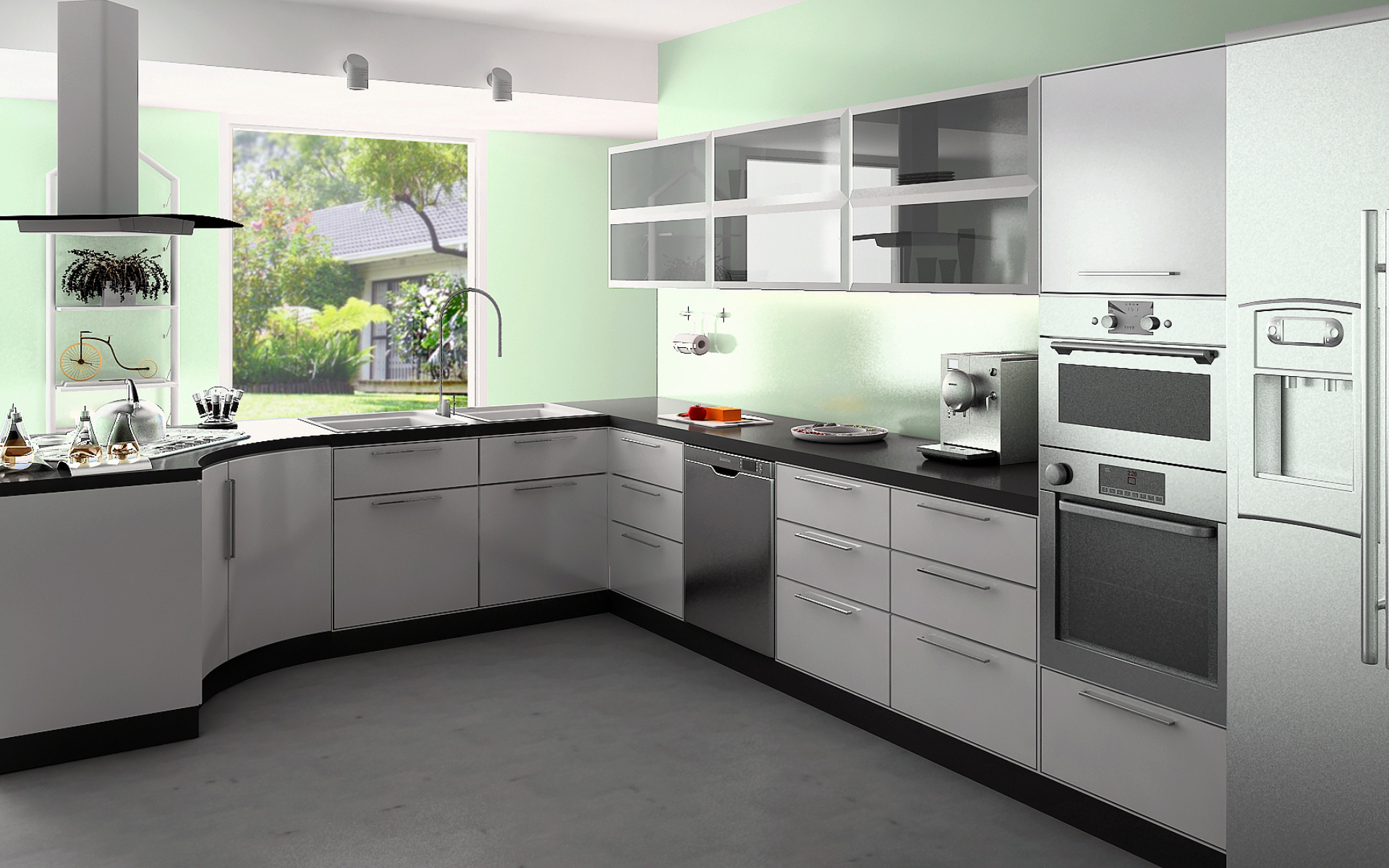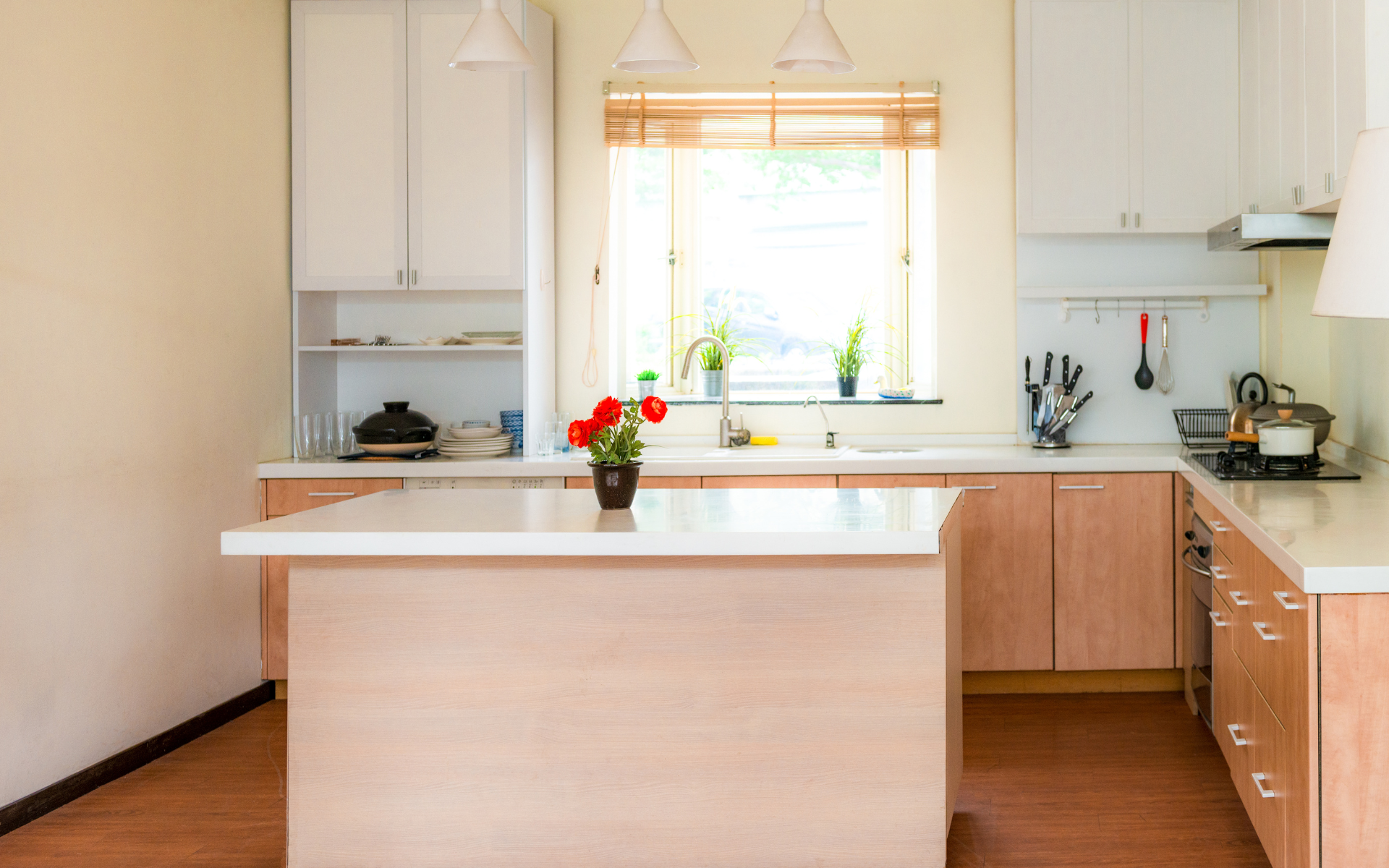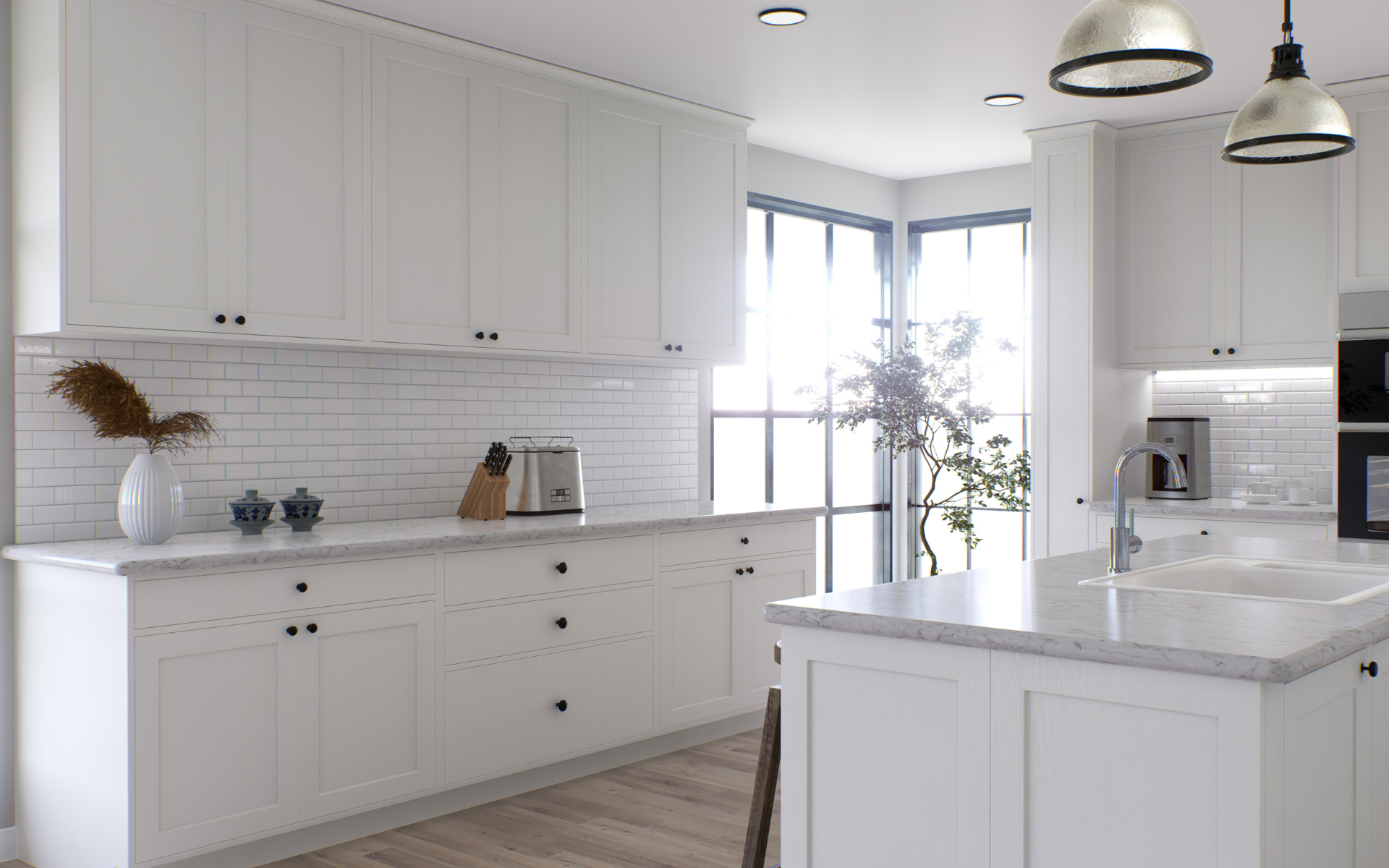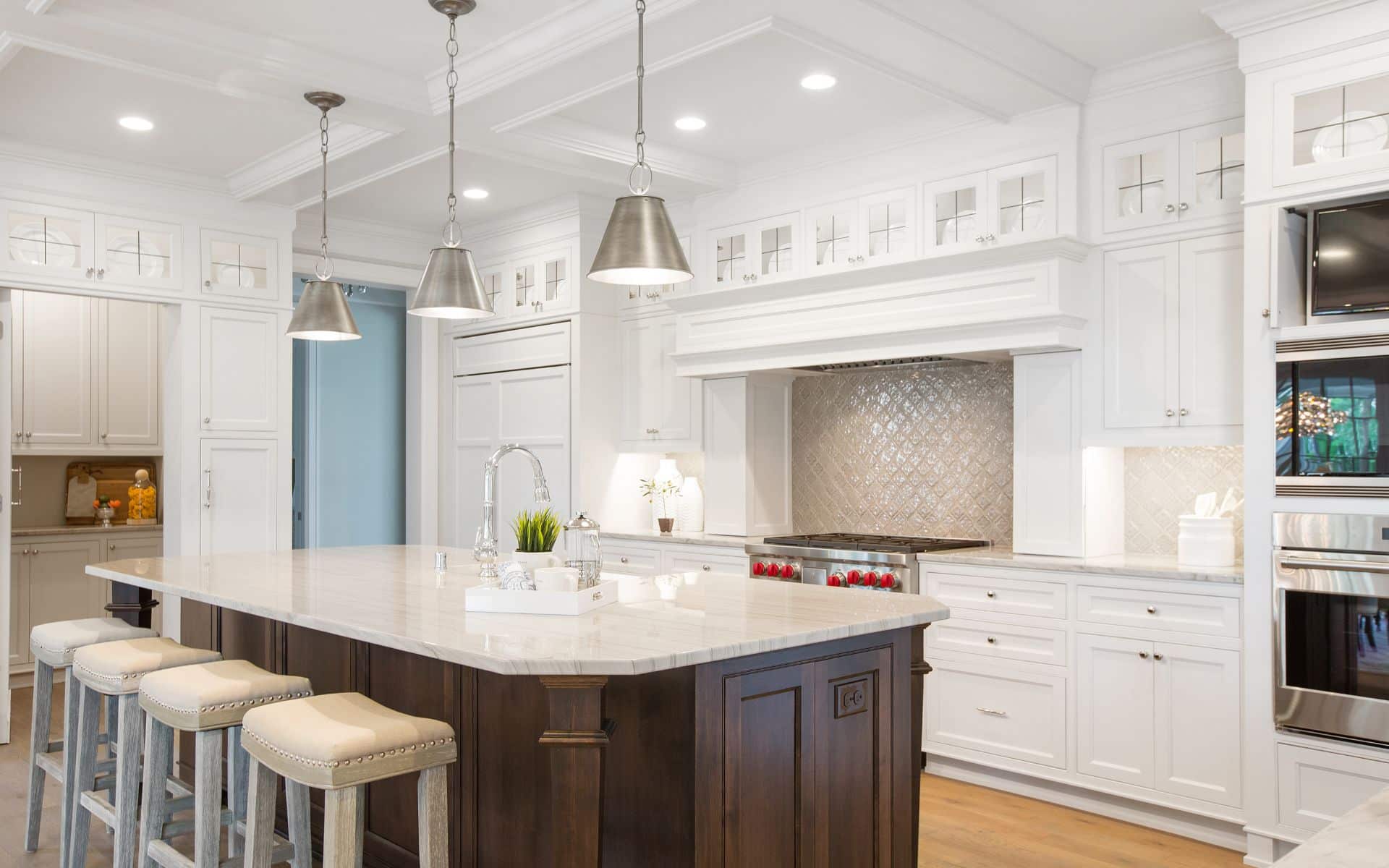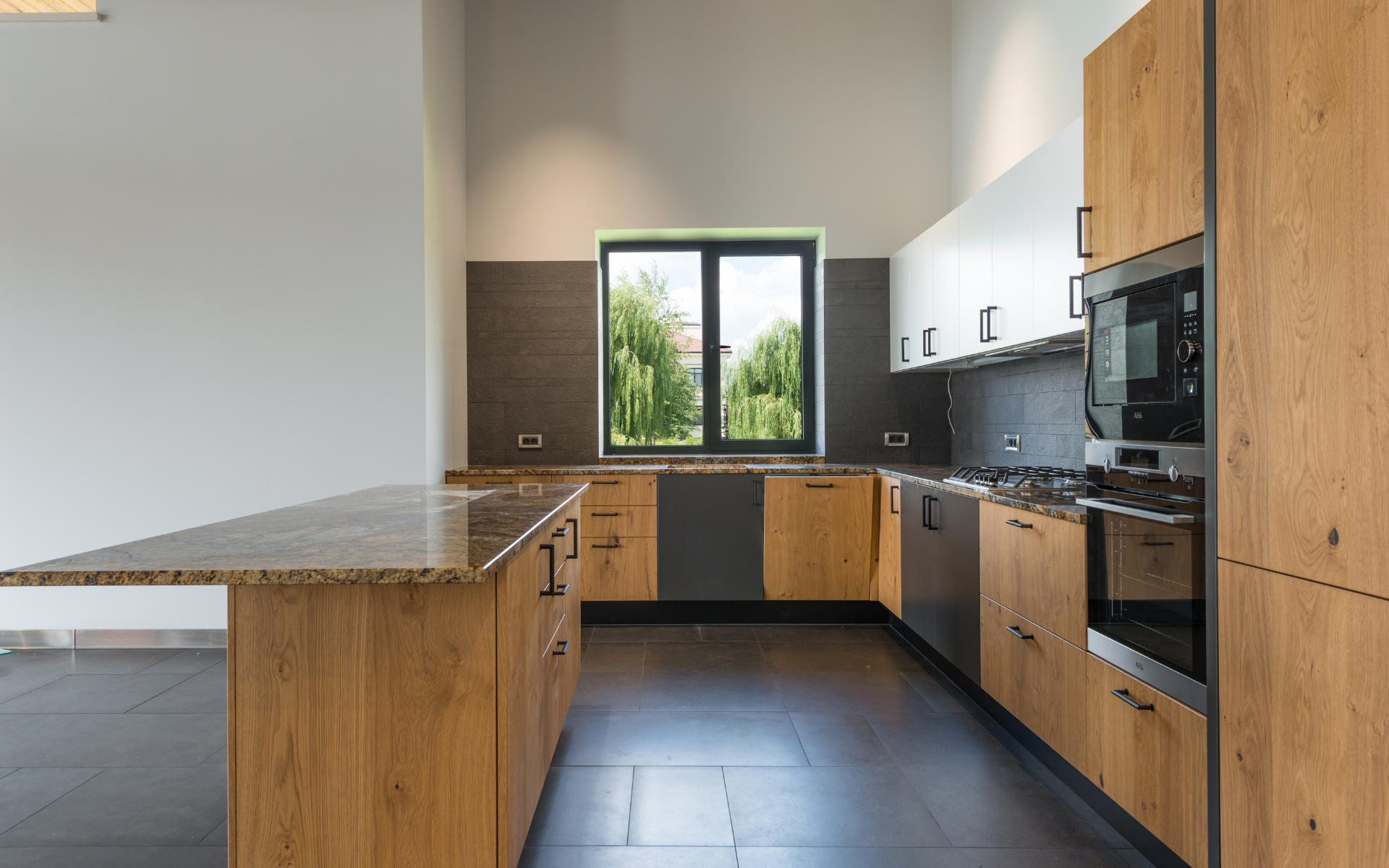Remodeling a small kitchen and bath can seem like an impossible challenge. With limited square footage, it’s easy to feel constrained by tiny spaces that don’t offer much flexibility. However, with careful planning, smart storage solutions, and space-enhancing layouts, even the tiniest kitchen can be transformed into a beautiful and highly functional room.
In this blog post, we’ll provide tips to maximize every inch when remodeling a small kitchen. From clever organization to durable and modern finishes, we’ll explore ways to make the most of a modest footprint. Read on for before-and-after inspiration and ideas to give your small kitchen a spacious feel while maximizing its functionality. With the right approach, you can create a gorgeous, efficient kitchen no matter the size.
Choose an L-shaped Layout
One of the best ways to maximize workspace and create more clearance in a small kitchen is to use an L-shaped layout. This places the sink, stove, refrigeration, and primary countertops along two adjacent walls, forming an efficient triangular workflow zone. An L-shaped design is ideal for small kitchens because it makes the most of limited linear feet while opening up floor space.
In a 60-square-foot kitchen remodel, an L-shaped layout can increase clearance throughout by eliminating the confined galley-style footprint. The open ends of the L shape also allow for easier traffic flow in and out of the kitchen. Strategically placed windows and lighting keep an L-shaped kitchen from feeling dark or closed in. Floating shelves and glass-front upper cabinets maintain an airy, open look while still providing essential storage.
With smart placement, an L-shaped layout allows a small kitchen to feel more expansive and functional. The design provides an uninterrupted workflow between the sink, stove, fridge, and counters—perfect for maximizing efficiency in a tiny space.
Incorporate a Small Central Island
While a full-sized kitchen island may dominate a small space, incorporating a narrow central island or cart can provide additional workspace without congestion. Central islands are great for small kitchens because they can serve many purposes in a modest footprint.
Look for a central island around 2 feet wide by 4 feet long—enough to provide prep space without crowding your small kitchen. Opt for an island on casters so it can roll out of the way when floor space is needed, then tuck back into place when not in use.
Include storage components like shelves, cabinets, or baskets to hold kitchen tools and essentials. A central island maximizes work space and storage without consuming valuable floor area. Just be sure to allow at least 3 feet of clearance around the island perimeter so it doesn’t bottleneck traffic flow. With the right proportions, a central island can be an asset even in tinier kitchens.
Define Key Kitchen Zones
Carefully delineating key kitchen zones is essential for optimizing every square foot. Use color, lighting and materials to create functional areas tailored to different tasks. For example, paint the wall behind the stove in a bold, complementary color to highlight the cooking zone. Install under-cabinet lighting to illuminate meal prep areas and recessed ceiling lights to wash the overall space in ambient light. Finally, floor materials like tile, high-end vinyl or stained concrete can direct foot traffic in an efficient path connecting each zone. Thoughtfully defining each area makes a small kitchen feel clean and intentionally designed rather than visually cluttered. It also allows concentrated storage and utilities right where needed most. With deliberate attention to lighting, color and materials, you can build smart, seamless zones that make the most of your compact kitchen.
Embrace Storage Innovation
Limited cabinet and pantry space make smart storage essential in a small kitchen. Look for ways to tuck necessities out of sight without sacrificing accessibility:
- Floating shelves provide intermediary space for a pretty cookware display. Stash lesser-used items towards the back to keep daily-use items handy.
- Narrow vertical storage units positioned between counters and appliances offer slim but accessible storage for spices, utensils, and dry goods.
- Optimize corner cabinet dead space with spinning “lazy Susan” tiers or vertical dividers.
- Multi-tiered drawers provide space for cutting boards, bakeware, and cooking tools.
- Mobile carts are great for small appliances while rolling shelves can stash bulk goods or extra dishware.
By maximizing every cavity and surface with functional storage, a small kitchen can hold all the necessities needed for a chef’s active cooking space.
Select Durable, Low-Maintenance Finishes
While finishes like hardwood floors and granite counters are gorgeous, they can be impractical in compact, busy kitchens. Instead, consider durable, low-maintenance finishes that can withstand years of wear and tear.
Sheet vinyl is an affordable and water-resistant flooring option available in modern wood and stone looks. Porcelain or ceramic tile flooring is another sturdy choice. Solid surface acrylic or quartz countertops resist stains, scratches, and cracks better than natural stone.
Stainless steel appliances are built to handle the bumps and spills of daily kitchen use. Prioritize resilient finishes that will stay beautiful over time, even in high-traffic small kitchens. This helps maximize your remodeling budget for necessities like storage and workflow.
Work With the Best Contractors
When remodeling a small kitchen, securing the best contractor should be a top priority. Reconfiguring a modest footprint requires precision planning and flawless execution. Thoroughly vet each contractor and request examples of their previous small kitchen remodels.
Look for a contractor experienced in:
- Crafting creative layouts that make tiny spaces feel more open
- Problem-solving quirks like sloped floors or awkward corners
- Optimizing every inch to maximize storage and utility placement
- Rethinking door, window or access point positioning
The right contractor will bring thoughtful, tailored solutions to address the unique challenges of small kitchens. With their innovative kitchen remodeling ideas, they can transform limited square footage into an efficient dream kitchen. For this complex task, it’s essential to secure a contractor able to deliver excellent results.
End Notes
While small in square footage, a well-designed compact kitchen can be big in both beauty and functionality. An L-shaped layout provides an uninterrupted workflow, while a central island adds space for meal prep and storage. Clever organization solutions and resilient finishes maximize utility.
By playing up strengths and minimizing limitations, you can create a small kitchen that perfectly suits your needs. With the right approach, tiny spaces can be just as stunning, efficient, and enjoyable as more sizable rooms. Don’t be afraid to dream big—a beautifully remodeled small kitchen is entirely within reach.

